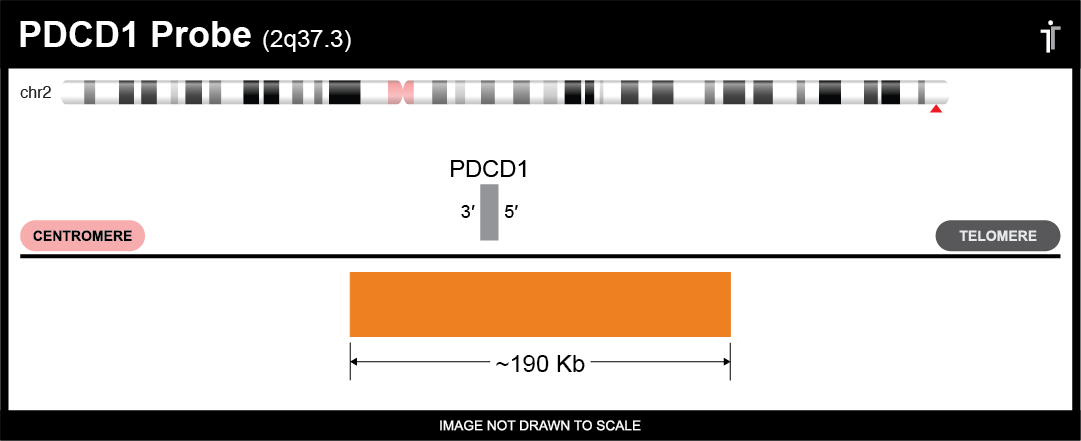PDCD1 FISH Probe
Our PDCD1 probe is used to detect PDCD1 amplifications and deletions. The probe comes labeled in orange, but can be customized to meet your needs.

** This product is for in vitro and research use only. This product is not intended for diagnostic use.

| SKU | Test Kits | Buffer | Dye Color | Order Now |
|---|---|---|---|---|
| PDCD1-20-OR (Standard Design) | 20 (40 μL) | 200 μL |

|
|
| PDCD1-20-GO | 20 (40 μL) | 200 μL |

|
|
| PDCD1-20-GR | 20 (40 μL) | 200 μL |

|
|
| PDCD1-20-AQ | 20 (40 μL) | 200 μL |

|
|
| PDCD1-20-RE | 20 (40 μL) | 200 μL |

|
Gene Summary
This gene encodes a cell surface membrane protein of the immunoglobulin superfamily. This protein is expressed in pro-B-cells and is thought to play a role in their differentiation. In mice, expression of this gene is induced in the thymus when anti-CD3 antibodies are injected and large numbers of thymocytes undergo apoptosis. Mice deficient for this gene bred on a BALB/c background developed dilated cardiomyopathy and died from congestive heart failure. These studies suggest that this gene product may also be important in T cell function and contribute to the prevention of autoimmune diseases. [provided by RefSeq, Jul 2008]
Gene Details
Gene Symbol: PDCD1
Gene Name: Programmed Cell Death 1
Chromosome: CHR2: 242792032-242801058
Locus: 2q37.3
FISH Probe Protocols
| Protocol, Procedure, or Form Name | Last Modified | Download |
|---|